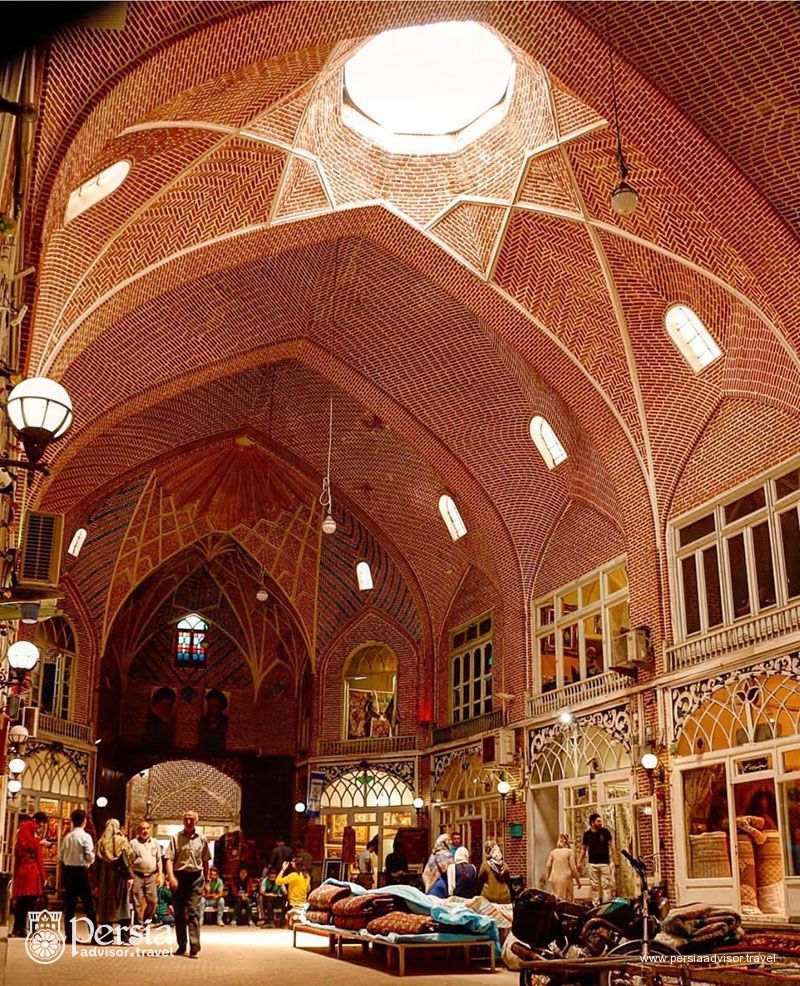
Historic bazaar of Tabriz is one of the most massive covered interconnected brick structures in the world. Tabriz, the biggest city in North West Iran (East Azerbaijan Province), used to be Iran’s capital in various historic eras.
Tabriz Historic Bazaar Complex was registered in UNESCO World Heritage list in 2010. This vast traditional complex involves two dozen caravanserais, 22 Timches, and more than 5500 different storefronts.
Timche is a domed hall and caravanserai consisting of a courtyard surrounded by a set of rooms. Most Timches and caravanserais include three floors; the middle floor is to trade and sell goods, the lower floor is the warehouse, and the upper floor is for rest and sleep. Both modern and traditional merchandizes are available in the bazaar some of which occupied a section of it.

Plan of Tabriz Historic Bazaar Complex – Persia Advisor Travels
by Negar Ganji
Jewelry, herbal remedies and species, copper products, shoes and leather, hats, fruits and vegetables, kitchen utilities, and cloth shops are among the most popular parts of the bazaar. Nonetheless, Mozaffarieh Timche, dedicated for colorful carpet trades, is the most photographable part of the bazaar.

Tabriz Historic Bazaar, Tabriz, Azerbaijan Sharqi (East) Province, Iran
Photo by Rei nikoo via Wikimedia Commons / CC-BY-SA-4.0
The function of Tabriz historic bazaar is not only confined to shop and trade but over centuries it has been developed into a key social, political and religious center. Movements in the bazaar of Tabriz highly influenced both Constitutional and Islamic Revolutions of Iran. It also has a clear religious function concerning all around noticeable Shia banners and shutting down the bazaar for ten days in the Month of Muharram. Furthermore, there are several mosques inside or in the vicinity of Bazaar among which the Blue Mosque is the most prominent.

Tabriz Historic Bazaar, Tabriz, Azerbaijan Sharqi (East) Province, Iran
Photo by Kianooshmohebian via Wikimedia Commons / CC-BY-SA-4.0
According to some historical paintings, the Bazaar existed during Seljuk era. However, it had its zenith during Ilkhanid and Safavid eras between 13th to 16th centuries CE when Tabriz was the capital and a key stop in the northern route of Silk Road. Although the Safavid king changed the capital of Iran from Tabriz to Qazvin in the 16th century, due to the empowerment of Ottoman Empire, the bazaar of Tabriz retained its standing as a commercial center until the 18th century.
The Tabriz historic Bazaar delineates the traditional, cultural, and commercial systems of Iran. Despite experiencing severe incidents such as fire and earthquake, the bazaar of Tabriz has still gloriously beaten heart of the city and is even more popular than recently established malls.





